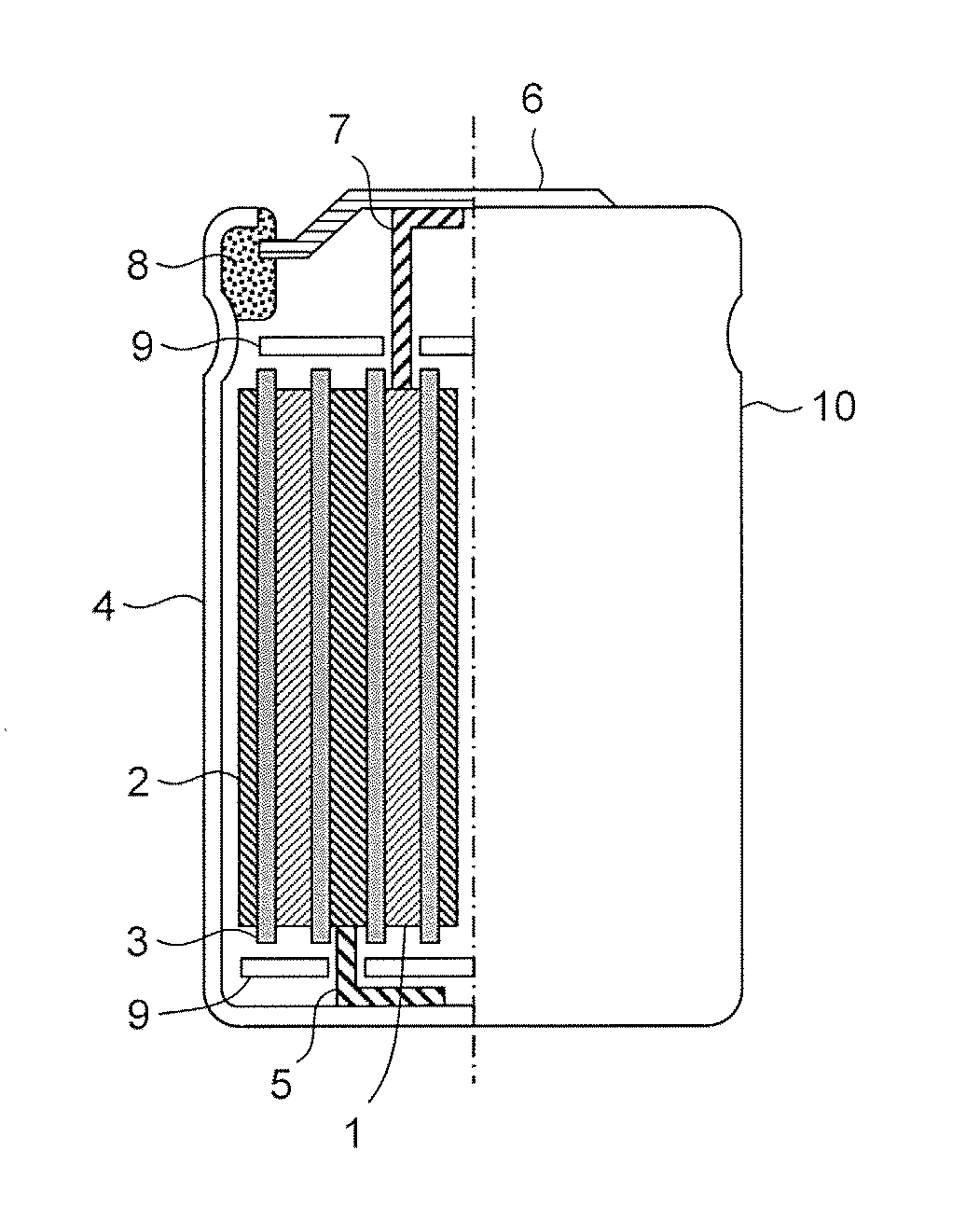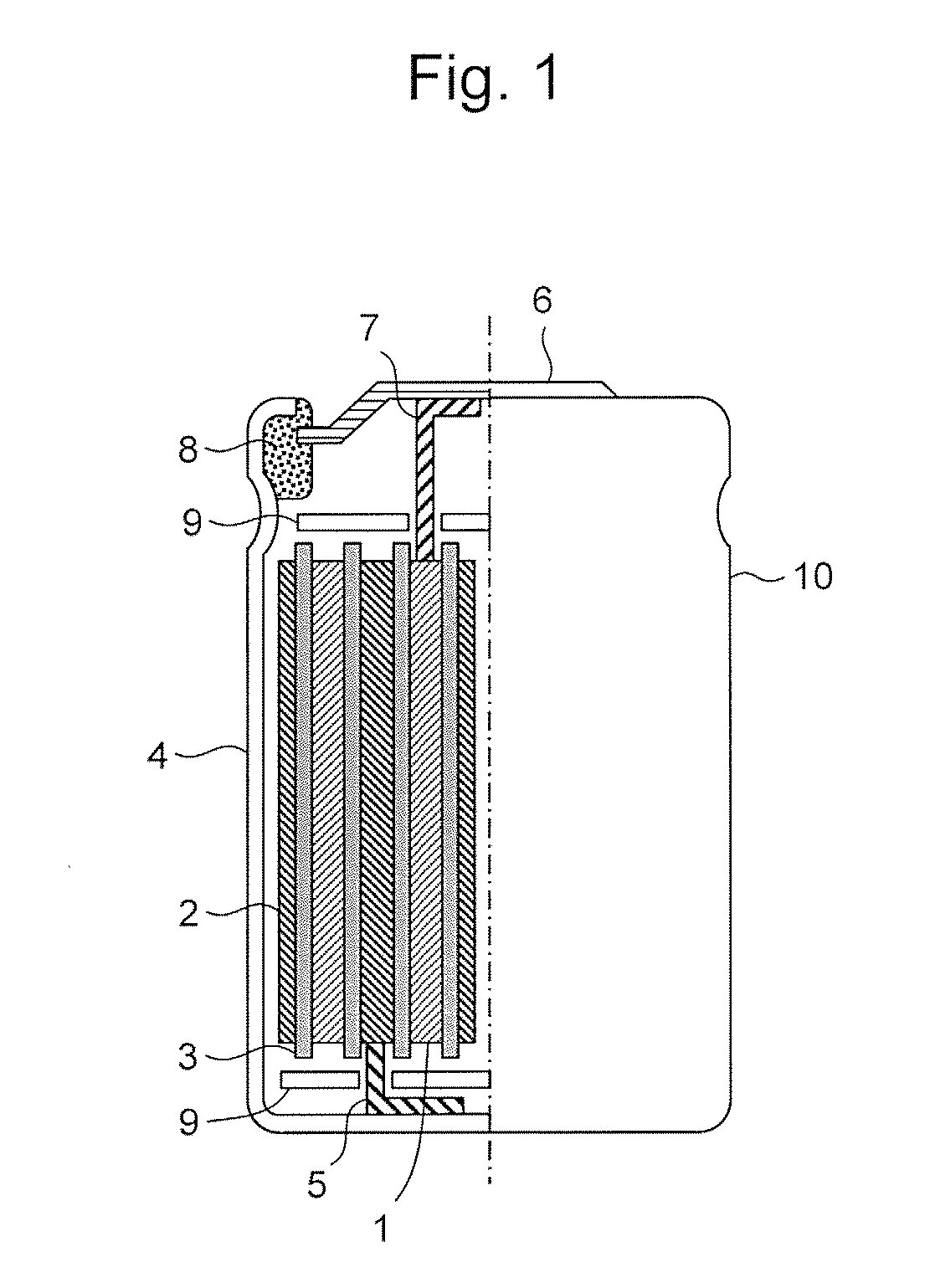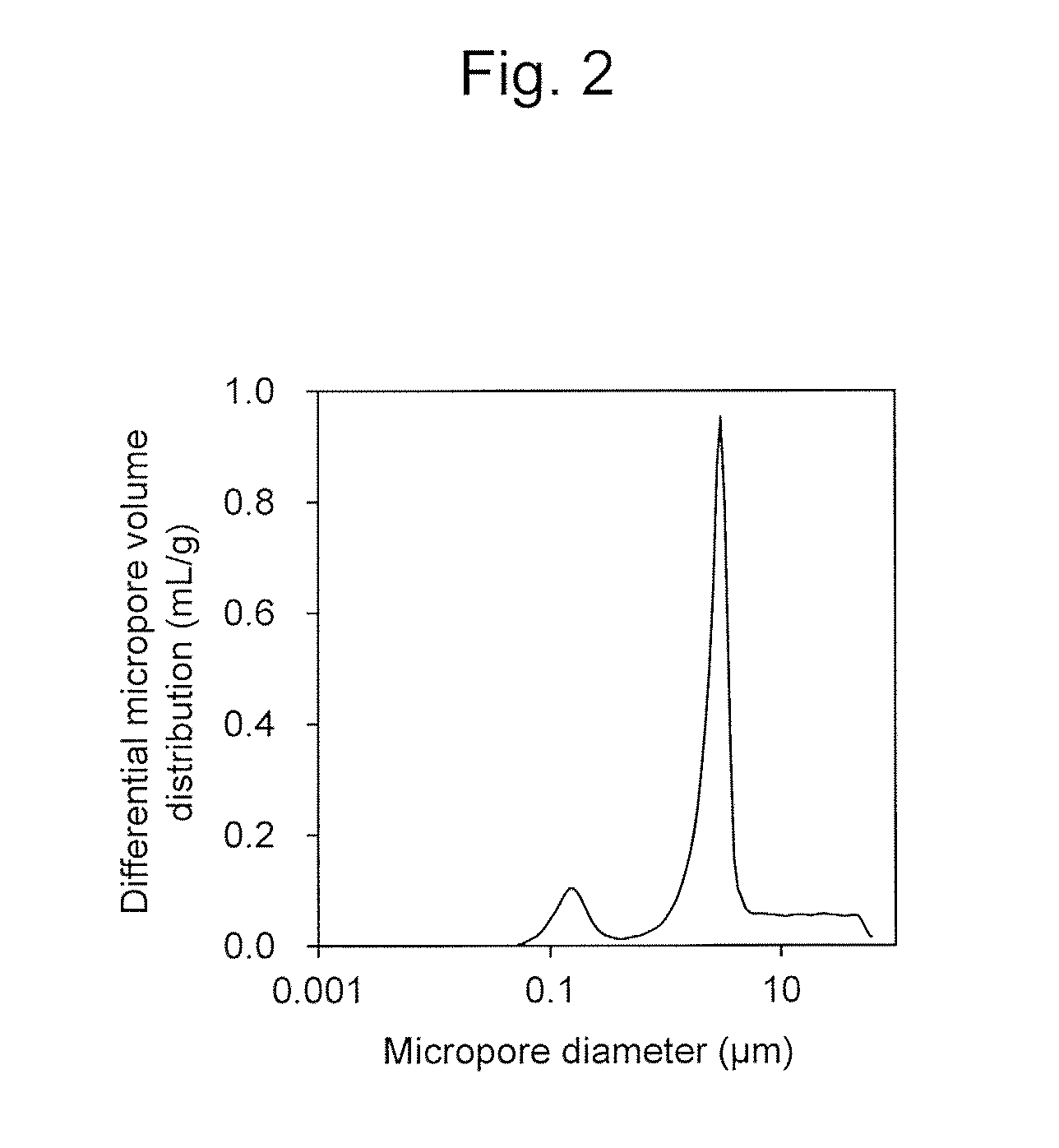Positive electrode active material for lithium ion secondary battery, and positive electrode for lithium ion secondary battery and lithium ion secondary battery comprising the same
a lithium ion secondary battery and active material technology, applied in the direction of positive electrodes, cell components, electrochemical generators, etc., to achieve the effects of low resistance, high charge-discharge cyclability, and high capacity
- Summary
- Abstract
- Description
- Claims
- Application Information
AI Technical Summary
Benefits of technology
Problems solved by technology
Method used
Image
Examples
example 1
[0075]The positive electrode active material for a lithium ion secondary battery according to Example 1 was prepared by the following procedure. First, raw materials lithium carbonate, nickel carbonate, cobalt carbonate, and manganese carbonate were weighed such that the molar concentration ratio of Li:Ni:Co:Mn was 1.03:0.75:0.15:0.10. These materials were ground by a wet process, and were mixed to prepare a raw material powder. After the raw material powder was spray dried with a spray dryer, the raw material powder was placed in a high-purity alumina container, and underwent pre-burning under an oxygen stream at 600° C. for 12 hours. The pre-burned product was cooled in the air, and was disintegrated. The resulting product was again placed in a high-purity alumina container, and underwent main burning under an oxygen stream at 780° C. for 8 hours. This burned product was cooled in the air, was disintegrated, and was classified.
[0076]The crystal structure of the resulting positive ...
example 2
[0087]A positive electrode active material for a lithium ion secondary battery according to Example 2 was prepared by the following procedure. First, a positive electrode active material was prepared by the same procedure as in Example 1 except that the raw materials lithium carbonate, nickel carbonate, cobalt carbonate, and manganese carbonate were weighed such that the molar concentration ratio of Li:Ni:Co:Mn was 1.03:0.80:0.10:0.10.
[0088]The crystal structure of the resulting positive electrode active material was analyzed. The peak attributed to R3-m was confirmed in the layer structure.
[0089]The average composition of the positive electrode active material was determined. The compositional ratio of Li:Ni:Co:Mn was 1.00:0.80:0.10:0.10.
[0090]The amounts of LiOH and Li2CO3 were determined by the same procedure as in Example 1. It turned out that the amount of LiOH was 0.13% by weight, the amount of Li2CO3 was 0.56% by weight, and the weight of LiOH was 23% of the weight of Li2CO3....
example 3
[0093]A positive electrode active material was prepared by the same procedure as in Example 2 except that the temperature during main burning was 760° C.
[0094]The average composition of the positive electrode active material was determined. The compositional ratio of Li:Ni:Co:Mn was 1.00:0.80:0.10:0.10.
[0095]The amounts of LiOH and Li2CO3 were determined by the same procedure as in Example 1. It turned out that the amount of LiOH was 0.16% by weight, the amount of Li2CO3 was 0.59% by weight, and the weight of LiOH was 27% of the weight of Li2CO3. The compositional formula calculated from the average composition and the amount of the free lithium compound determined was Li0.978Ni0.80Co0.10Mn0.10O2.
[0096]The open pore volume ratio was 23%. The average particle diameter of the primary particles was 0.5 μm, and the BET specific surface area was 1.5 m2 / g.
[0097]Next, a lithium ion secondary battery according to Example 3 including a positive electrode comprising the positive electrode act...
PUM
 Login to View More
Login to View More Abstract
Description
Claims
Application Information
 Login to View More
Login to View More - R&D
- Intellectual Property
- Life Sciences
- Materials
- Tech Scout
- Unparalleled Data Quality
- Higher Quality Content
- 60% Fewer Hallucinations
Browse by: Latest US Patents, China's latest patents, Technical Efficacy Thesaurus, Application Domain, Technology Topic, Popular Technical Reports.
© 2025 PatSnap. All rights reserved.Legal|Privacy policy|Modern Slavery Act Transparency Statement|Sitemap|About US| Contact US: help@patsnap.com



